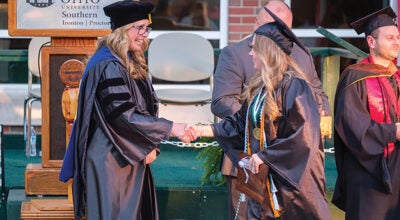BOE awaits more on redistricting
Published 12:00 am Sunday, January 23, 2022
Director: Some races in ‘limbo’ for now
With the Ohio Supreme Court rejecting both the new congressional and general assembly maps approved by the Ohio General Assembly and Gov. Mike DeWine, four races on this year’s ballot remain unclear.
The court ruled the maps unconstitutional after groups sued, claiming the Republican-backed maps were too gerrymandered in favor of one party and ordered a fix to be created within 10 days.
Lawrence County Board of Elections director Cathy Snyder said, with the new maps rejected, they have been told to return to using the previous maps for now.
“We were told to revert back,” she said. “Things are kind of in limbo for now.”
Races that could be impacted on this year’s ballot in the county include legislative and congressional seats.
In the House race, the new map had called for all of Lawrence County to be moved into the 93rd district, represented by Republican Jason Stephens. They county is currently split be tween the 93rd and 90th District, represented by Republican Brian Baldridge. Both are up for re-election this year for another two-year term.
The county would have seen a bigger change in the congressional race, being shifted from the 6th Congressional District, represented by Republican Bill Johnson, to the 6th District to the west, represented by Republican Brad Wenstrup.
Both were up for re-election this year for a two-year term.
The 17th Senate district, currently held by Republican Bob Peterson, included Lawrence County in both the old and rejected maps.
Peterson is term limited from running again in 2022, but the district could shift boundaries under any new map the committee puts forward as a fix.
“We’re anxious for them to get things wrapped up,” Snyder said of the situation.
The filing deadline for candidates in Lawrence County’s primary is Feb. 2.
The Ohio Redistricting Commission returned to work Tuesday to re-draw maps, its members pledging more transparency this time around as they face a looming deadline.
In what was perhaps a gesture of bipartisan cooperation, Republican House Speaker Bob Cupp, the panel’s chair, wore one of the face masks against COVID-19 that have tended to divide Republicans and Democrats at Ohio’s Statehouse.
The court ordered the commission to create new boundaries that more closely reflect the state’s 54 percent Republican, 46 percent Democratic political divide. The maps, as passed, were predicted to again deliver supermajorities in both chambers to the GOP.
The court’s majority agreed with voting-rights and Democratic groups that had challenged maps drawn and approved by Republicans as an extreme partisan gerrymander. Justices found the maps violated a constitutional amendment against gerrymandering that was broadly supported by Ohio voters in 2015.
The commission is made up of Ohio Gov. Mike DeWine, Secretary of State Frank LaRose and Auditor Keith Faber, all Republicans, and four state lawmakers, two Republicans and two Democrats. DeWine swore in state Rep. Allison Russo, the House Democratic Leader-elect, on Tuesday to replace former Leader Emilia Sykes, who resigned the role in December and is running for Congress. Republican Senate President Matt Huffman and Democratic state Sen. Vernon Sykes round out the panel.
The panel released a joint statement Sunday in which they agreed that “individual commission members will have access to other commission members’ relevant staff and contractors,” consistent with the court’s instructions.
Lawsuits challenging the maps brought to light that some panel members — particularly the three statewide officials — were left at a disadvantage during the first round of map-drawing. That was because they were not given access to the experts or software that lawmakers were employing behind closed doors to produce the maps.
DeWine said Tuesday that discussions among commission members and staff have actually already begun. A former state attorney general, he said he interpreted the ruling as allowing any individual commission member to call any other member or their staff to request a meeting or to ask a question, within the limits of Ohio public meetings law.
Urging against delay, LaRose, the state’s elections chief, cautioned that mapmakers “are starting to become perilously close” to the point where administering a smooth primary on May 3 may be logistically and mechanically impossible.
“We are already approaching statutory deadlines that likely cannot be met,” he said.
The commission’s website — redistricting.ohio.gov — is being relaunched to accept public input and hearings will be streamed live on the Ohio Channel, a public state government channel.
The Associated Press contributed to this report






